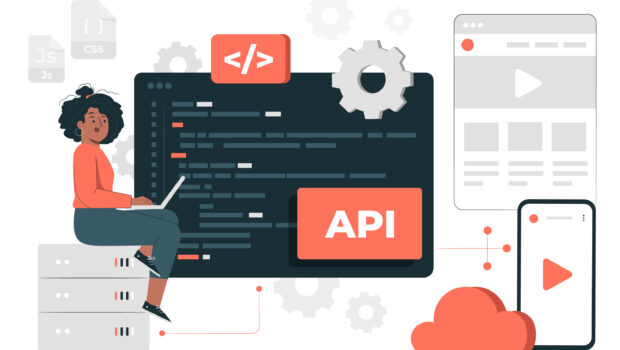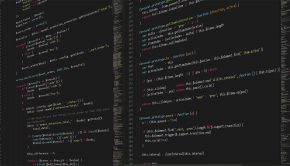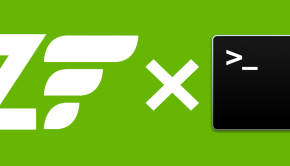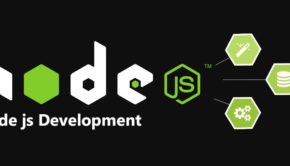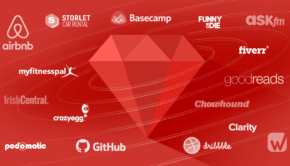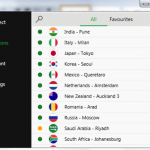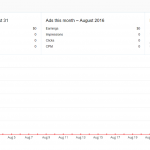How To Choose The Best Framework For Your Needs
A software framework offers generic functionality that can be modified based on the desired outcome. Frameworks reduce the amount of programming and testing required while increasing application stability. Even though every framework has benefits and drawbacks, there are some fundamental factors to take into account when selecting one for a given project. Some of the popularly used frameworks are Playwright, Selenium, and Cypress.
It is important to consider the specific requirements of the project, as well as the experience and preferences of the development team when evaluating different frameworks. It may also be useful to try out a few different options through experimentation or prototyping before making a final decision.
The answer to the following questions can lead you to the best automation framework as per your requirements:
- Functionality: What features does the framework provide and how well does it support the needs of the project?
- Performance: How efficient is the framework in terms of resource usage and runtime performance?
- Popularity and community support: How widely adopted is the framework, and how active is the community in terms of contributing to and maintaining the framework?
Essential factors to consider while choosing a framework
- Completeness is definitely an important factor to consider when evaluating a framework. A framework with a high degree of completeness can save a lot of time and effort, as many common features and functionality are already built in. However, depending on the requirements of the project, a framework that is less complete but more flexible and extensible may be a better fit.
It’s also important to consider the trade-offs between using a full-featured framework that provides a lot of built-in functionality versus a more minimalistic framework that is easier to customize and extend with additional functionality.
A complete framework might have a lot of unnecessary features for certain projects, can add additional complexity and bloat to the codebase, and may also limit the flexibility of development. At the same time, a minimalistic framework can require more time to develop certain features from scratch. Still, it can give more control over the development direction and make the codebase more maintainable.
It’s also important to evaluate the availability of third-party libraries and modules that can be integrated with the framework, as this can help to fill any gaps in functionality. Community support and development for a framework are also crucial factors when evaluating the completeness of a framework.
- The production environment is also an important consideration when evaluating a framework. It is important to ensure that the framework is compatible with the operating system, server, and other infrastructure that will be used in the production environment.
It’s also important to check that the framework does not rely on deprecated or unsupported technologies or features that might cause issues in the production environment. Using a framework that is built on top of widely-used, up-to-date technologies can help reduce the risk of compatibility and support issues in the future.
Another important aspect of the production environment is scalability and performance. The framework should be able to handle the load and traffic of the application in the production environment and should also provide options for easy scaling and optimization as the need arises.
It’s also essential to consider how easy it is to monitor and debug issues in the production environment. A framework that provides good support for logging, error handling, and debugging can make it much easier to identify and fix problems as they arise.
All in all, while evaluating a framework, it is important to consider how well it aligns with the requirements of the production environment and how it will perform in real-world usage scenarios so that the application runs smoothly and without any hiccups in the long run.
- Consistency management is another important aspect to consider when evaluating a framework. A framework can help to provide a consistent structure and organization for the codebase, which can make it easier for developers to understand and navigate the code. It can also provide a consistent set of conventions for naming, structuring, and styling the code, which can help to reduce the likelihood of errors and make the codebase more maintainable.
- Sustainability: It should be considered when choosing a software framework. Ensuring that a framework can keep up with the software development lifecycle (SDLC) is crucial for the long-term success of the project. A sustainable framework will help in streamlining the maintenance and scalability of your application, which are critical for the long-term success of the project.
This means that the framework should have a large and active community, well-documented and updated resources, good backward compatibility, smooth upgradeability, and the provision of support. Furthermore, it should be able to handle future updates of development tools, languages, libraries, and technologies.
- Security: With the increasing number of cyber threats, it is crucial to ensure that the framework provides robust security features to protect the application and its users. This includes features such as built-in protection against common vulnerabilities like cross-site scripting (XSS) and SQL injection, as well as the ability to easily implement other security measures like authentication and authorization.
- Documentation is also an important factor to consider when choosing a software framework. Well-written, detailed documentation can make it easier for developers to learn and use the framework effectively, which can help to reduce development time and improve the overall quality of the application. In addition, good documentation can also help with maintenance and upgrades, as it provides a clear and thorough understanding of the framework’s features and capabilities.
- Business factors such as budget constraints and external factors such as a need to align with a larger organization’s technology stack can greatly influence the decision to choose a specific framework. In such cases, it may be necessary to make trade-offs and consider the potential risks and costs associated with using a framework that may not be the best fit for the project.
- Considering the needs of the end-users: It is important when choosing a software framework to keep in mind what the end-users want. The end-users are the people who will ultimately be using the application, and their needs and preferences should be taken into account when making decisions about the technology used to build it.
For instance, if the end-users are not tech-savvy, you may want to choose a framework that has a user-friendly interface and easy-to-use features. If the end-users will be accessing the application from mobile devices, then choosing a framework that is optimized for mobile performance and responsive design is important.
Additionally, it may be important to choose a framework that is compatible with the devices, browsers, and platforms that the majority of your end-users will be using.
By considering the needs of the end-users, you can ensure that the final product provides an excellent user experience, which can increase adoption, usage, and ultimately the success of the product.
A cloud-based cross-browser testing platform like LambdaTest provides a convenient and easy-to-use platform for running tests written in Selenium, Playwright, and Cypress on a variety of browsers and operating systems, which can help users ensure that their websites or applications work correctly across different configurations. Let us have a look at these popularly used frameworks.
Playwright
Playwright is an open-source browser automation framework developed by Microsoft. It allows developers to write automated tests for web applications and browser-based applications, across multiple platforms and browsers (Chrome, Firefox, Safari, and Edge). It is built on top of the popular browser automation library, WebDriver, and aims to provide developers with a more high-level, user-friendly API.
One of the key features of Playwright is its ability to automate tasks across multiple browsers using a single API. This makes it easier for developers to write cross-browser tests and test their applications on different platforms without having to write and maintain separate test codes for each browser.
Additionally, Playwright allows for the automation of tasks such as filling out forms, clicking buttons, and navigating pages, making it ideal for automating end-to-end tests of web applications. It can be used with many programming languages, including JavaScript, Python, and C#.
Playwright was first released in 2020, and it is actively developed with regular updates and improvements. It has quickly gained popularity and attracted a large community, with many open-source tools and libraries built on top of it.
Selenium
Selenium is an open-source framework for automating web browsers. It provides a set of libraries and tools that can be used to automate the interactions of a web browser with a website, allowing developers to test the functionality and usability of their web applications. Selenium can be used to automate tasks such as filling out forms, clicking buttons, navigating between pages, and asserting the behavior of the website under test.
Selenium is compatible with a variety of programming languages, such as Java, C#Python, JavaScript, and Ruby, and thus can be integrated with a variety of test frameworks, like JUnit, TestNG, TestCafe, and more.
It is widely used for automated functional and acceptance testing for web applications; it’s mainly used for UI testing, where the actions of the users are simulated and the resulting behavior is checked.
LambdaTest provides a cloud-based Selenium Grid that enables users to run their Selenium tests on different configurations of web browsers and various operating systems. Users can access the Selenium Grid via Lambdatest’s API or through various plugins, such as the LambdaTest Jenkins plugin, to integrate Selenium tests into their continuous integration workflow.
Cypress
Cypress is an end-to-end testing framework for web applications. It is a JavaScript-based tool that is built on top of Mocha, a popular JavaScript test framework, and uses a browser-based approach for testing web applications.
Cypress provides a simple and intuitive API for interacting with web pages, making it easy to write and run tests for web applications. It also includes features such as automatic waiting, real-time reloading, and time-travel debugging to help simplify the testing process.
It is designed to work seamlessly with modern web development tools and frameworks such as React, Angular, and Vue.js.
LambdaTest supports running Cypress testing scripts on different browsers and operating systems. As Cypress tests are browser-based, the LambdaTest platform also provides all the debugging tools of a browser to debug Cypress test results.
The best automation framework for your project will depend on your specific requirements, but any of the above frameworks can be a good option.
Summary
When selecting a software framework for a project, it is important to consider various factors such as the team’s experience and capabilities, as well as the features that the framework offers to support the project’s goals, the type of application being tested, and the technology stack being used. This will help you choose the best framework that aligns with your team and the requirements of your project.
Cover Image by Freepik

